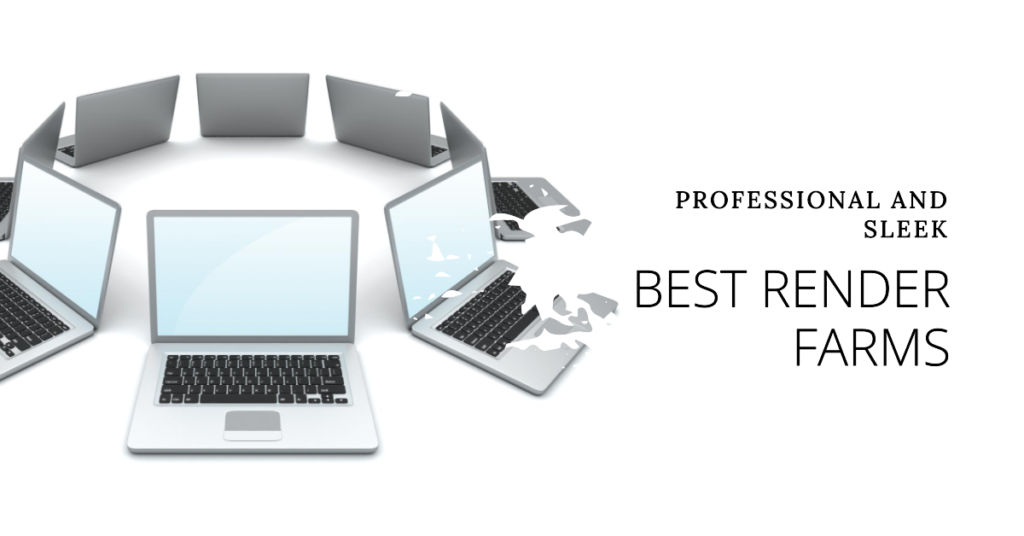
Table of Contents
1. Introduction: Harnessing Scalability and Efficiency in Rendering
Rendering complex 3D projects demands substantial computational resources, often exceeding the capabilities of individual workstations. This challenge is where render farms step in, offering scalable computing power to expedite rendering processes and meet project deadlines effectively. In this guide, we delve into the world of render farms, exploring the best options available and their unique features that cater to diverse rendering needs across industries.
2. Understanding Render Farms
Render farms comprise clusters of interconnected computers or servers dedicated to rendering tasks. They leverage distributed computing power to divide rendering workloads into manageable chunks, processing them simultaneously to accelerate output delivery. Render farms are indispensable for handling large-scale projects, intricate animations, photorealistic renderings, and tight project schedules common in industries such as architecture, animation, visual effects (VFX), gaming, and product design.
3. Benefits of Using Render Farms
Utilizing render farms offers several advantages, including enhanced rendering speed, scalability, cost-effectiveness, and flexibility in resource allocation. By distributing rendering tasks across multiple nodes, render farms significantly reduce project turnaround times, allowing teams to iterate designs, finalize visuals, and meet client deadlines efficiently. Scalability ensures that rendering resources can be scaled up or down based on project demands, optimizing costs and resource utilization effectively.
4. Top Features to Look for in Render Farms
When selecting a render farm, key features to consider include compatibility with leading 3D software (such as Autodesk Maya, 3ds Max, Cinema 4D, Blender, etc.), support for various rendering engines (V-Ray, Arnold, Redshift, Octane, etc.), network reliability, security measures, customer support quality, pricing models (per-minute, per-node, subscription-based), and integration with cloud platforms for added flexibility and accessibility.
5. Comparing Leading Render Farms
Title: Render Titans: Exploring Top Render Farm Solutions
- RenderRocket: Known for its user-friendly interface and robust support for popular 3D software and rendering engines.
- RebusFarm: Renowned for its extensive render engine support, flexible pricing plans, and global network of data centers for low-latency rendering.
- Fox Renderfarm: Recognized for its high-performance cloud rendering capabilities, secure data handling, and competitive pricing options for small to enterprise-level projects.
- GarageFarm.NET: Notable for its scalable rendering solutions, personalized customer support, and seamless integration with major 3D software and rendering plugins.
- Conductor Technologies: Leveraging cloud-based rendering infrastructure, Conductor offers efficient rendering solutions tailored for animation studios, VFX houses, and game development teams.
6. Optimizing Workflow with Render Farms
Title: Rendering Zenith: Streamlining Processes with Render Farms Integrating render farms into workflow pipelines streamlines rendering processes, allowing artists and designers to focus on creativity rather than technical constraints. By offloading rendering tasks to dedicated infrastructure, teams can iterate designs rapidly, experiment with lighting, materials, and camera angles, and produce high-quality visuals without compromising project timelines.
7. Ensuring Data Security and Confidentiality
Title: Fortifying Integrity: Prioritizing Data Security While leveraging render farms for distributed computing power, ensuring data security and confidentiality is paramount. Choose render farms with robust encryption protocols, secure data transfer mechanisms, access controls, and compliance certifications (such as GDPR, HIPAA, etc.) to safeguard sensitive project assets and intellectual property from unauthorized access or breaches.
8. Collaborative Rendering Capabilities
Title: Synergistic Endeavors: Collaborative Rendering Dynamics For teams collaborating on large-scale projects, render farms offer collaborative rendering features that enable seamless sharing of rendering workloads, asset libraries, and project settings among team members. Real-time monitoring tools, task management dashboards, and project versioning capabilities enhance collaboration efficiency, communication, and project transparency across distributed teams or studios.
9. Cost Optimization Strategies
Title: Fiscal Efficiency: Navigating Render Farm Costs Optimizing render farm costs involves understanding pricing models, resource utilization patterns, render time estimations, and budget allocation strategies. Explore options such as on-demand rendering, priority job queues, render time estimation tools, and resource scaling automation to balance rendering speed with cost-effectiveness based on project priorities and timelines.
10. Conclusion: Empowering Rendering Excellence


In conclusion, leveraging the best render farms empowers creative professionals and teams to unleash rendering excellence, accelerate project timelines, enhance collaboration, and maintain data security standards. By evaluating features, compatibility, security measures, collaborative capabilities, and cost optimization strategies, organizations can choose render farm solutions that align with their rendering needs, project scale, budget considerations, and long-term growth objectives, ensuring a seamless and efficient rendering workflow across industries.



